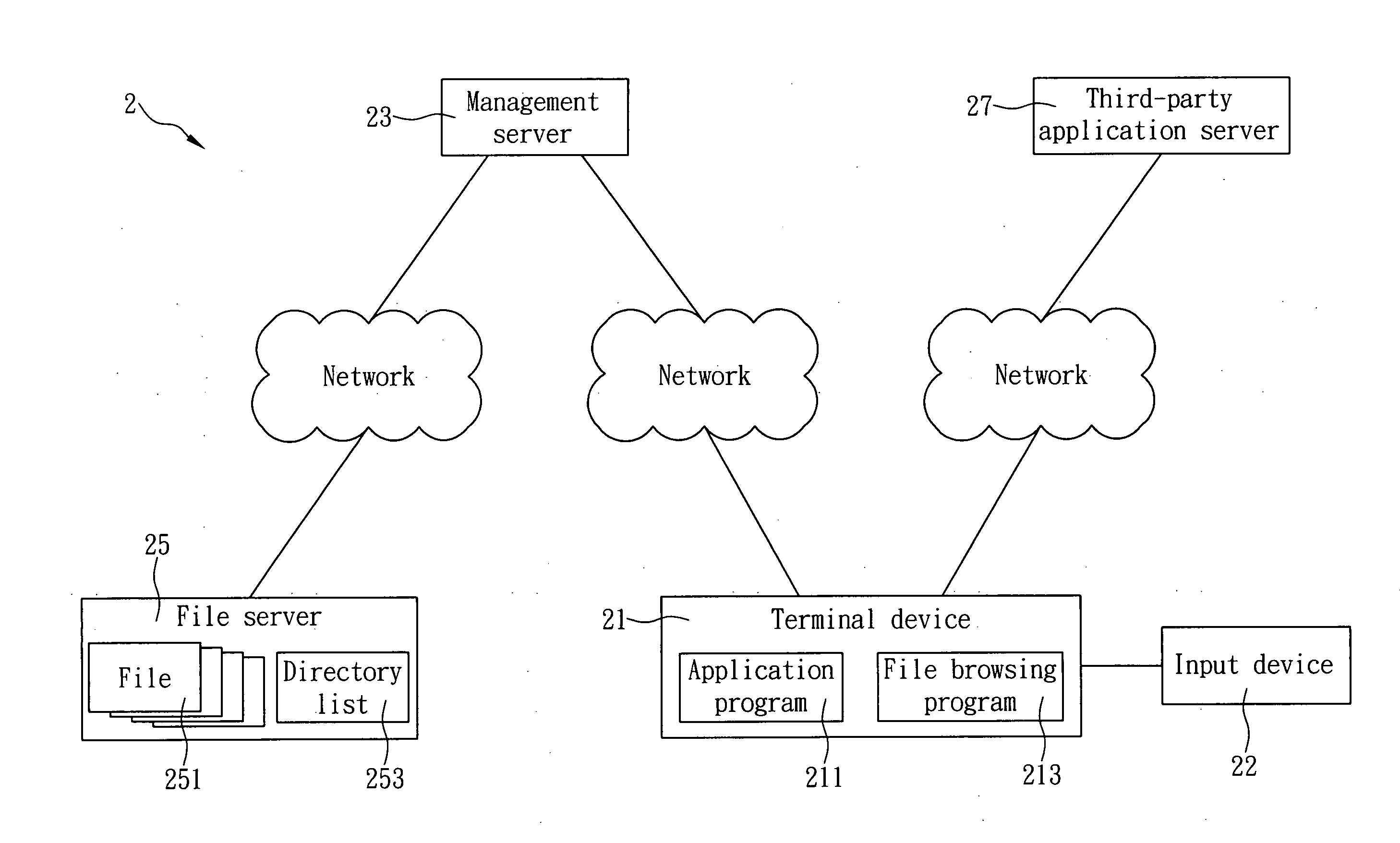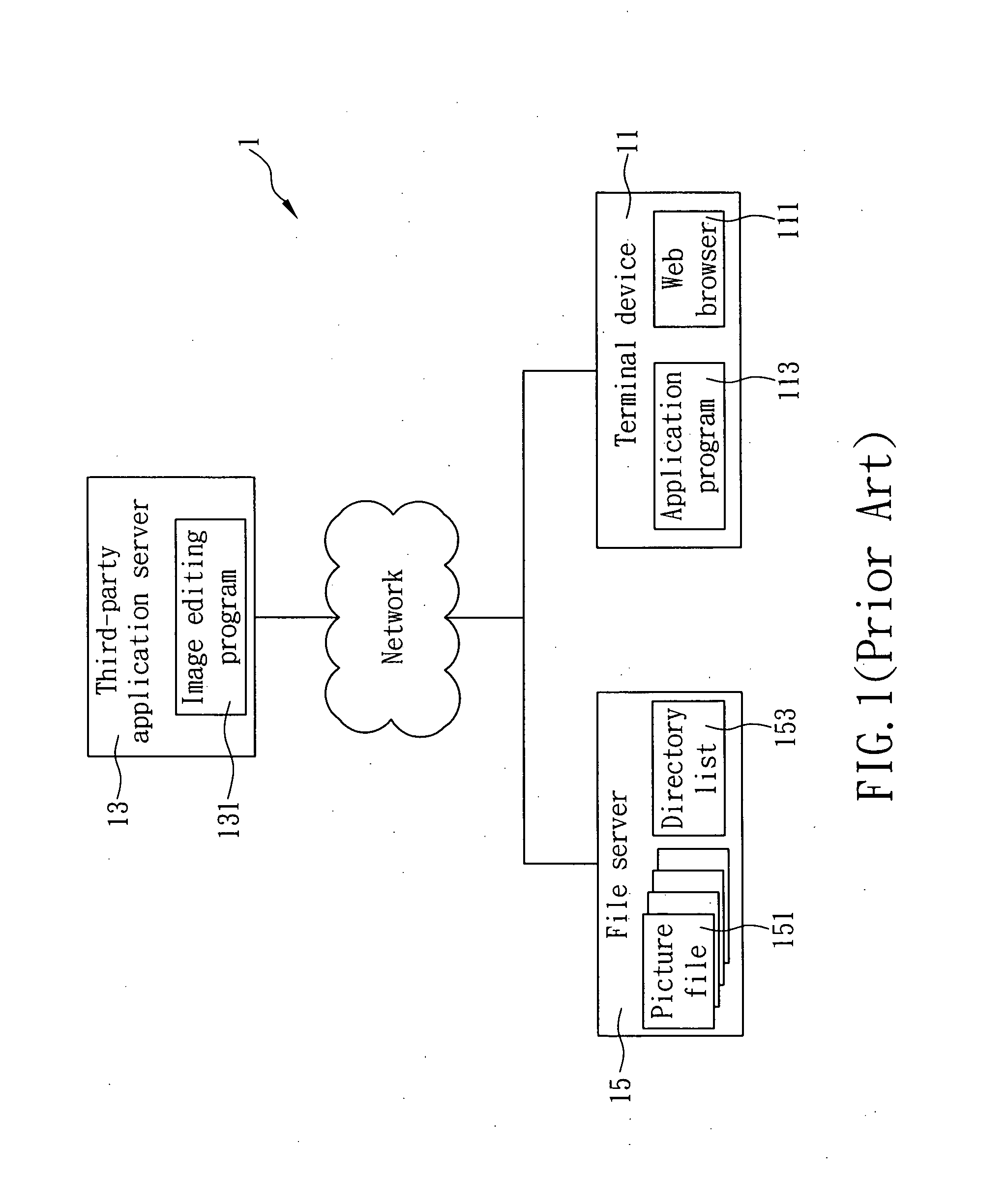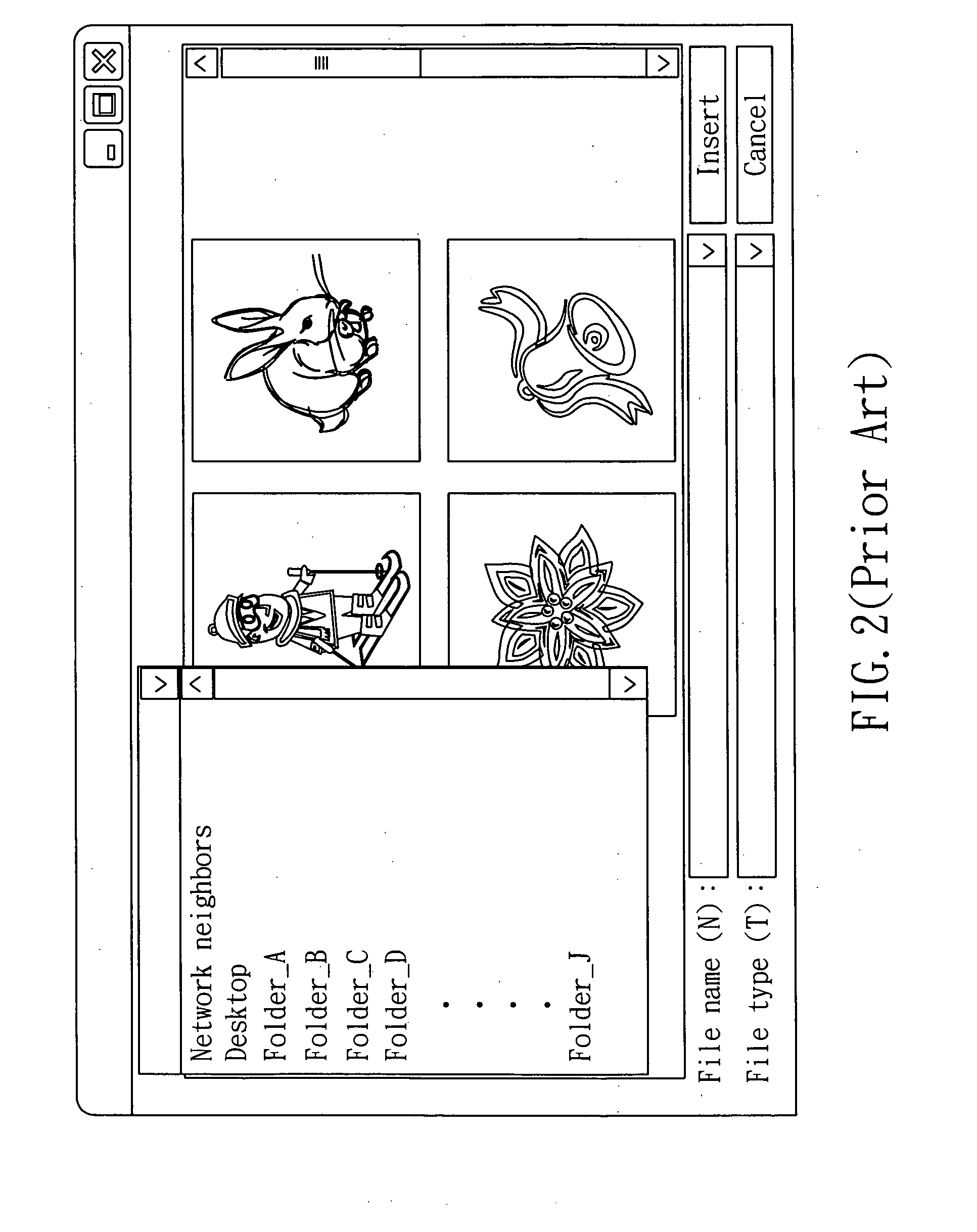[0008]In view of the security problems of existing cloud computing methods, the inventor of the present invention conducted extensive research and experiments and finally succeeded in developing a cloud computing method capable of hiding real file paths as disclosed herein. The disclosed cloud computing method is intended to hide the source location of files, minimize the risks of
exposure of the location where the files are stored, and thereby significantly increase the security of users' private data.
[0009]It is an object of the present invention to provide a cloud computing method capable of hiding real file paths, wherein the method is applicable to a network
system that includes a terminal device, a
file server, a management server, and a third-party
application server. The management server is connected respectively to the terminal device and the file server. The third-party
application server is connected to the terminal device. The terminal device is installed with an application program which, once executed by the terminal device, displays a web browsing button and a save button on the terminal device. The file server stores at least one file and can generate a directory list according to the at least one file. To read files, the cloud computing method is carried out as follows. The terminal device sends a browsing activation signal to the management server when the web browsing button is triggered. Upon receiving the browsing activation signal, the management server reads the directory list from the file server and sends a file browsing program to the terminal device along with the directory list. The terminal device displays the directory list via the file browsing program and, upon receiving a file selection command, selects at least one file from the directory list according to the file selection command. Then, the terminal device sends a file processing signal to the management server, so as for the management server to download from the file server the file specified by the file processing signal and send the specified file to the terminal device. Finally, the terminal device sends the specified file to the third-party application server through the application program, thus allowing the third-party application server to process the specified file. Meanwhile, the file browsing program is terminated by the terminal device. In the foregoing process, the file received by the third-party application server comes from the terminal device, and the third-party application server makes no connection to the file server. This prevents those with ill intentions from knowing the location of the file server via the third-party application server or via data related to the file received by the third-party application server. Consequently, the risks of
cyber attack are reduced, the security of the file server is effectively enhanced.
[0010]It is another object of the present invention to provide the foregoing cloud computing method, wherein in order to save files, the method is carried out in the following manner. The terminal device receives the processed file from the third-party application server and triggers the save button. As a result, the file browsing program is activated, and the directory list is displayed via the file browsing program. Upon receiving a save command, the terminal device selects a saving path from the directory list according to the save command and sends a file saving path signal to the management server along with the processed file. Upon receiving the file saving path signal and the processed file, the management server sends the processed file to a location in the file server that corresponds to the saving path contained in the file saving path signal. In short, to store the processed file, the processed file is downloaded from the third-party application server to the terminal device and then sent from the terminal device to the management server and finally to the file server. By doing so, the third-party application server is also prevented from making any connection with the file server, with a view to effectively hiding the real location of the file server and keeping the private data in the file server safe from theft.
[0011]Yet another object of the present invention is to provide the foregoing cloud computing method, wherein the management server, after downloading the specified file, performs format conversion on the specified file. More specifically, the management server converts a binary file into a Data URI file and sends the Data URI file to the terminal device, which in turn sends the Data URI file to the third-party application server. The third-party application server then converts the Data URI file into a binary file and processes the binary file. The Data URI format not only can speed up
file transfer but also allows files to be transferred between servers using different operating systems and be directly displayed on web browsers (e.g., Chrome, Firefox, Internet Explorer, and so on) by means of a dynamic
scripting language (e.g.,
JavaScript or JScript), thus substantially facilitating
file transfer.
 Login to View More
Login to View More  Login to View More
Login to View More 


